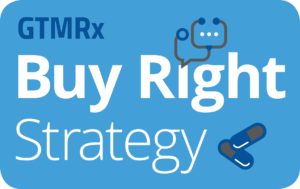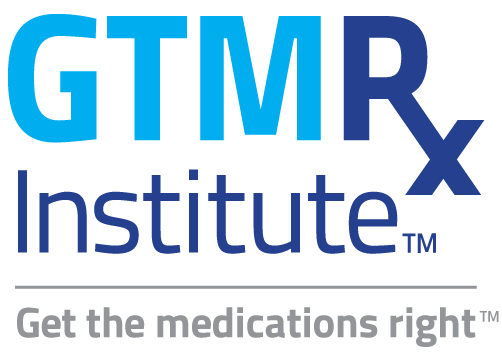
 Katherine H. Capps
Katherine H. Capps
Executive Director
GTMRx Institute
May 3, 2021
Employers possess the power to change the medication use process: Now, they will have the tools
Employers want a healthy, productive workforce. They want to eliminate waste. They want health care that works. They want the investments they make in primary care programs designed to manage chronic conditions and in medication management programs to create value; mitigate risks; and decrease hospitalizations, ER visits and other services that impact total cost of care.
They can make that happen. Employers as health plan sponsors manage the health benefits for 49% of this country’s total population. They can leverage their contract authority to bring about change and create a better medication use process for all Americans. Since pharmacy coverage impacts cost drivers in medical benefits, they should think more broadly about how innovative strategies to manage pharmacy benefit programs will lead to savings on total cost of care. Rita Shane, PharmD, FASHP, FCSHP, chief pharmacy officer and professor of Department of Medicine for Cedars Sinai Medical Center and assistant dean of clinical pharmacy at the University of California San Francisco School of Pharmacy, outlines the problem inherent in starting or continuing medications without a comprehensive evaluation of the patient’s health issues and medications.
In her recent blog, former Procter & Gamble senior manager of U.S. Benefits and GTMRx senior advisor, Sandra Morris talked about the power of employers as changemakers. Often, because of staffing limitations in benefit departments, many employers as health plan sponsors don’t recognize their power or don’t have the bandwidth to use it.
We can help. Last week, the GTMRx Institute released the GTMRx Employer Toolkit. It’s part of our commitment to advance to a more integrated, comprehensive and systematic approach to managing medication therapy problems. Specifically, our goal is to optimize medication use through comprehensive medication management (CMM) in practice. Simply stated, CMM is
The standard of care that ensures each patient’s medications (whether they are prescription, nonprescription, alternative, traditional, vitamins or nutritional supplements) are individually assessed to determine that each medication is appropriate for the patient, effective for the medical condition, safe given the comorbidities and other medications being taken and able to be taken by the patient as intended.1
By employers, for employers
The Toolkit represents months of work by the GTMRx Employer Toolkit Taskforce, whose members include representatives of the nation’s leading top business coalitions. I want to thank all the business coalition leaders who have committed time, effort and expertise to advance this work on behalf of their employer members:
- Jessica Brooks, MPM, PHR, Pittsburgh Business Group on Health
- Gerri Burruel, Purchaser Business Group on Health
- Marianne Fazen, Ph.D., Dallas Fort Worth Business Group on Health; Texas Business Group on Health
- Jane Cheshire Gilbert, CPA, Teachers Retirement System of Kentucky
- Neil Goldfarb, Greater Philadelphia Business Coalition on Health
- Gaye Fortner, BSN, MSN, HealthCare 21 Business Coalition
- Cheryl Larson, Midwest Business Group on Health
- Chris Syverson, Nevada Business Group on Health; HealthCare Partners Nevada
- Troy Ross, MS, Mid-America Coalition on Health Care
- Karen van Caulil, Ph.D., Florida Alliance for Healthcare Value
They worked with us, offering guidance and input—because they recognize that the Toolkit provides concrete steps for change—the what and how—and it provides the rationale for a better way forward through team-based, person-centered use of clinical pharmacists working collaboratively with the physician to get the medications right. Since medications are involved in 80% of the way we treat and prevent illness, this is a cross-cutting opportunity to save lives and save money. The Toolkit helps employers comprehend what’s at stake and:
- Understand why the current system of trial-and-error medication use must end.
- Discover how CMM differs from traditional MTM services and in what ways CMM is currently being used today to save lives and money.
- Recognize why employers should champion change.
A practical guide
This compendium of resources we created equips employers with the knowledge to manage their pharmacy and medical programs. It includes a summary of peer-reviewed evidence to support the claims of better care, lower cost and higher provider and patient satisfaction with CMM combined with pharmacogenetic testing. It offers a standardized definition of CMM, graphically presents the 10-steps of the CMM process of care, explains who benefits the most from CMM and defines the CMM patient care process. Finally, it offers a conversational roadmap outlining things to consider when working with your PBMs, medical carriers and other solution providers.
At the GTMRx Institute we believe that employers are changemakers. Today we challenge employers, and equip them with tools to:
- Learn more about how to optimize medication use through CMM in practice.
- Talk to, and shape your medical carriers, health plans and PBMs.
- Collect the right data
- Gain leadership support
- Engage brokers and consultants
- Use your contract authority
- Build alliances
It works
We’re not asking employers to try something unproven. CMM is a proven benefit strategy that can be used to reduce participant cost of care and improve the health of employees and their families. There is strong evidence to support this.
For example, we know that CMM decreases total cost of care by an average of $1,000 per patient per year. 2,3,4,5 There are several reasons why. Among them: improved clinical outcomes, especially in those with chronic conditions; reduced emergency department visits, hospitalizations and readmissions; and lower absenteeism.6,7,8,9,10
Join us
Our country wastes $528 billion each year on non-optimized medication use. What’s more, over 275,000 avoidable deaths each year are tied to medication disasters.11 This ineffective, inefficient and, frankly, dangerous system cannot stand.
It’s about so much more than tinkering with the price of this drug or that drug. Incremental measures yield incremental improvements. We’re calling for a transformation. We cannot do it without employers. Download the Toolkit and find out how you can help lead the charge.
- McInnis T, Webb E, and Strand L. The Patient-Centered Medical Home: Integrating Comprehensive Medication Management to Optimize Patient Outcomes, Patient Centered Primary Care Collaborative, June 2012
- Johannigman MJ, Leifheit M, Bellman N, et al. Medication therapy management and condition care services in a community-based employer setting. Am J Health Syst Pharm. 2010 Aug;67(16):1362-7.
- Bunting B, Nayyar D, Lee C. Reducing healthcare costs and improving clinical outcomes using an improved Asheville project model. Innovations in Pharmacy. 2015;6(4):227.
- Rodriguez de Bittner M, Chirikov VV, Breuning I, et al. Clinical effectiveness and cost savings in diabetes care, supported by pharmacist counselling. J Am Pharm Assoc. 2017;57(1):102-108.
- Cranor C, Bunting B, Christensen D. The Asheville project: long-term clinical and economic outcomes of a community pharmacy diabetes care program. J Am Pharm Assoc. 2003 Mar;43(2): 173-84.
- Brummel, A, Carlson, A. “Comprehensive Medication Management and Medication Adherence for Chronic Conditions.” Journal of Managed Care Pharmacy 2016; 22 (1); 56-62.
- Budlong, H, Brummel, A, Rhodes, A, Nici, H. “Impact of Comprehensive Medication Management on Hospital Readmission Rates.” Population Health Management 2018.
- Sorensen T, Sorge L, Millonig M, Wallace M, Schommer J, and Pestka D. Integrating Medication Management, Lessons Learned from Six Minnesota Health Systems. College of Pharmacy, University of Minnesota. Sept 2014.
- Pellegrin K, Krenk L, Oakes SJ, et al. Reductions in medication-related hospitalizations in older adults with medication management by hospital and community pharmacists: a quasi-experimental study. J Am Geriatr Soc. 2017; 65:212-219
- Budlong H, et al. 2018 op cit.
- Watanabe J, et al. “Cost of Prescription Drug–Related Morbidity and Mortality.” Annals of Pharmacotherapy, March 26, 2018. journals.sagepub.com/eprint/ic2iH2maTdI5zfN5iUay/full

